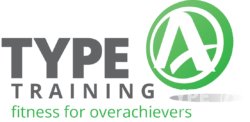Ever wonder if you’re actually ready to crank your training up a notch? Fortitude Training (FT) might be just the thing. Dr. Scott Stevenson designed this system for bodybuilders who want to break through their limits and chase real muscle growth.
Fortitude Training has you working out 3-4 times a week, mixing up volume and intensity in a way that can seriously change your physique.

Forget the old-school splits for a minute. FT combines loading and pump work, using different intensity techniques so your body never really gets used to what you’re throwing at it.
Popular posts:
You’ll hit muscle groups more than once a week and recover just enough to avoid burning out or getting injured.
It doesn’t matter if you’re in a fancy gym or just your garage. FT adapts.
A lot of lifters swear they’ve seen better results with FT than with standard routines. Workouts usually last about 90 minutes and use a bunch of different exercises and methods to spark muscle growth.
Key Takeaways
- Fortitude Training is for bodybuilders who want to train often (3-4 times per week) and grow muscle with a mix of loading and pump work.
- FT has different tiers—Turbo, Baseline, and Tiers 1-3—so you can dial in the right amount of volume and intensity for your recovery.
- You need to pay attention to exercise choice, rest, and recovery to get the most from FT and avoid overtraining.
What Is Fortitude Training?

Fortitude Training (FT) is a full system for bodybuilding. It mixes specific training techniques with nutrition and supplements, keeping intensity and mental toughness at the center.
Origins and Philosophy
Dr. Scott Stevenson, who’s got a solid reputation in bodybuilding and a background in exercise physiology, came up with Fortitude Training. He built FT from years of research and hands-on work with competitive bodybuilders.
The big idea is to build both physical and mental fortitude. Dr. Stevenson wanted the system to push you further than the usual programs, but still keep it doable over the long haul.
The name “Fortitude” isn’t just for show—it’s about the mental grit you need to really follow the program. That mindset matters as much as the lifts themselves.
FT isn’t a cookie-cutter plan. You get a template, but you can tweak it to fit your recovery and your goals.
Key Principles of FT
A few things make FT stand out:
- Training Split Types – FT uses different schedules, like Base/Volume days and Muscle Rounds days, to hit muscles with changing intensity and volume.
- Muscle Rounds – This technique has you doing 6 mini-sets with short rests, piling on metabolic stress and time under tension.
- Progressive Loading – You keep ramping up the challenge, whether that’s more weight or less rest.
- Intra-workout Nutrition – What you eat during training gets special attention to keep your performance up.
FT also has planned deloads and tweaks based on how you’re recovering. This autoregulation helps you keep making progress without frying your system.
Comparison With Other Training Systems
FT stands out because it’s all about frequency and mixing things up. Most programs hit a muscle once a week, but FT has you working the same muscle 2-3 times per week, each time a bit differently.
Instead of just piling on volume like some training systems, FT leans into intensity and efficiency. The Muscle Rounds method gets a lot of tension without needing endless sets.
It’s more organized than most bodybuilding plans but not as rigid as powerlifting routines. You can make it work in almost any gym—even at home (here’s proof).
FT also takes a holistic approach. You get advice on training, nutrition, and supplements, all wrapped up in a template for bodybuilding success.
Core Components of Fortitude Training
Fortitude Training has three main set types to build muscle. Each one has a job, and together they make the program feel pretty complete.
Muscle Rounds
Muscle Rounds are the heart of Fortitude Training. You’ll do six mini-sets with the same weight, only resting 10-30 seconds between each.
Usually, you knock out 1-2 Muscle Rounds per exercise. Pick a weight that starts to feel tough by the fourth mini-set, so the last two are a grind. That’s where the magic happens—lots of metabolic stress and tension.
Track your Muscle Rounds each session. If you make it through all six without failing, bump the weight up next time. That’s how you keep growing.
Muscle Rounds work best with big compound moves—think bench, rows, squats. Short breaks and heavy weights create a strong muscle-building signal.
Loading Sets
Loading Sets are your heavy, straightforward sets. They’re usually 6-12 reps, heavier than Pump Sets, and all about strength and tension.
In FT, you use strict form and control the tempo. These sets drive muscle growth by cranking up the tension.
Push Loading Sets close to failure, but not all the way—leave 1-2 reps in the tank. That way you get intensity without blowing up your recovery.
You can add some spice with intensity tricks like:
- Partial reps
- Isometric holds
- Static pulses
- Stretching under load
Usually, you start adding these in during week two of a three-week training cycle.
Pump Sets
Pump Sets are all about higher reps (15-30) and short rests. You’ll feel the burn, and your muscles will swell up with blood and nutrients.
Do Pump Sets after Loading Sets or Muscle Rounds. They hit different muscle-building triggers than the heavy stuff.
Try these for more effect:
- Supersets (two exercises back to back)
- Drop sets (reduce weight, keep going)
- Constant tension (don’t lock out)
Pump Sets should make your muscles burn and feel full. Don’t just count reps—focus on keeping tension in the muscle.
You can adjust Pump Sets up or down, depending on how you’re recovering or what your goals are.
Programming Structure and Progression
The backbone of Fortitude Training is its smart approach to programming and progression. The structure aims for steady muscle growth while avoiding plateaus with well-timed progressions.
Session Organization
Most FT routines use a push/pull split during the week. This way, you can train more often without trashing your recovery.
Start each session with a warm-up—mobility work, some lighter moves, whatever gets you ready for the real work.
The main session uses a pyramid structure with these tiers:
- Base exercises (T3): Higher-rep isolation and accessory lifts
- Mid-tier exercises (T2): Moderate rep ranges
- Top-tier exercises (T1): Heavy compound moves, lower reps
This setup lets you hit different muscle fibers and energy systems in one workout. Mixing up the training stimuli helps you grow from more angles.
Progressive Overload Methods
You only grow if you keep pushing your limits. FT uses a few ways to do that:
- Load progression: Add weight when you nail all the reps.
- Volume progression: Slowly add more sets or reps.
- Density progression: Do the same work in less time.
- Weekly progression: Use a linear model, bumping up weight each week.
Always track what you do. Tiny improvements add up over time.
Change exercises or back off if your body asks for it. Listen to your recovery.
Volume and Frequency Considerations
FT spreads your training volume across the week, not just one monster session per body part. This means you train each muscle more often, which may help with protein synthesis and growth.
How often you train depends on how fast you recover. Most folks do best hitting each muscle 2-3 times a week.
Some rough guidelines:
- Beginners: 10-12 sets per muscle group per week
- Intermediate: 13-18 sets weekly
- Advanced: 20+ sets weekly
Pick exercises that fit your body and goals. Watch your recovery and tweak volume as needed.
Muscle Group Strategies in Fortitude Training
FT uses different strategies depending on the muscle group. The program shifts volume and intensity to fit how each muscle grows best.
Leg Training Approaches
Leg days in FT balance big compound lifts and isolation moves. Start with heavy stuff—squats, leg presses—to hit a lot of muscle fibers and build mass.
For hamstrings, add both leg curls and hinging moves like Romanian deadlifts. Switching between seated and lying curls helps hit the whole hamstring.
Quads respond well to a mix: use heavy sets (6-12 reps) for base loading, then pump work (15-30 reps) for that burn and extra growth.
Calves need both seated and standing raises. Standing hits the gastrocnemius; seated targets the soleus.
Keep rest periods short (60-90 seconds) for isolation lifts, and take longer breaks (2-3 minutes) after the heavy compound stuff.
Back and Pulling Movements
Back training in Fortitude Training takes a pretty thorough approach. It aims for width, thickness, and detail.
Vertical pulls like pullups and lat pulldowns build width. Horizontal pulls add thickness to your back.
The cable row is a staple. You can tweak your grip and elbow path to hit different back zones.
A close grip hits the mid-back more, while a wider grip really lights up your lats. It’s worth experimenting to see what feels right for you.
Mix in both straight sets and muscle rounds. Muscle rounds are rough: six sets of four reps with just 10 seconds rest.
That kind of intensity creates serious metabolic stress in your back muscles. It’s not easy, but it works.
Change your grip positions throughout your training cycle. Pronated, supinated, and neutral grips each challenge your muscles in their own way and help you avoid hitting a plateau.
Wrap up back sessions with isolation work, like straight-arm pulldowns. That last bit of effort really finishes off your lats.
Targeting Rear Delts and Minor Muscles
Rear delts and the smaller muscle groups need extra attention in Fortitude Training. They often lag behind since bigger compound moves only hit them as secondary muscles.
Put rear delt exercises at the start of your session. That way, you can load them up before fatigue sets in.
Face pulls, reverse pec deck, and bent-over lateral raises all work well. I’ve found that higher rep ranges (12-20) get the job done for these smaller muscles.
They seem to respond better to time under tension rather than just heavy weight. It’s one of those things you notice after a few weeks.
Give minor muscles like the rotator cuff, serratus anterior, and brachialis some isolation work. They support the big lifts, but still need direct attention for full development.
Training tip: If you’ve got a weak muscle group, hit it earlier in your workout. For example, train rear delts before your main back moves if they’re lagging.
Optimizing Recovery and Adaptation
Recovery and adaptation are huge in Fortitude Training. They really make or break your results.
Good recovery boosts your ability to handle training stress and build strength over time. Don’t skimp on it.
Managing Recovery Within FT
Fortitude Training (FT) puts your body through a lot. You need specific recovery strategies to get the most out of it.
Your body repairs and grows stronger between tough sessions. That’s just how it works.
Quality sleep is a must. Shoot for 7-9 hours each night to support hormone production and muscle repair.
Nutrition timing matters more than people think. Try to get protein in within 30 minutes post-workout (about 0.3g/kg bodyweight).
Keep your daily protein intake solid—aim for 1.6-2.2g/kg bodyweight. It’s not magic, but it adds up.
Plan active recovery days. Light walking, swimming, or yoga helps increase blood flow without piling on more stress.
Recovery techniques to try:
- Contrast water therapy (hot/cold)
- Foam rolling tight areas
- Strategic deload weeks every 4-6 weeks
- Check your morning heart rate for signs of fatigue
Balancing Intensity and Rest
FT only works if you balance hard training with enough rest. If you push too hard without recovery, you’ll hit a wall.
The adaptive response cycle goes like this: training stimulus → fatigue → recovery → adaptation. You need to finish that cycle before adding more stress.
Listen to your body. If you feel sore all the time, your performance drops, or you’re just wiped out, you probably need more recovery.
If you’re struggling to recover, try this:
- Cut back on volume before dropping intensity
- Take longer rests between sets
- Pick exercises that are easier on your joints
Rest days aren’t wasted—they’re when your body actually gets stronger. Honestly, it can be tough to take it easy, but that’s how you rebuild.
Applications for Bodybuilding and General Fitness
Fortitude Training (FT) is pretty versatile. You can tweak it for different fitness goals and still get great results with muscle growth and strength.
Building Hypertrophy
Fortitude Training really shines when it comes to building muscle. The system uses multiple rep ranges in one workout to hit various muscle fibers.
You’ll use the “training to failure” principle. It gets you more muscle fiber recruitment, and honestly, it’s a nice way to shake things up if you’re stuck.
FT throws in intensity techniques like partials, iso holds, and static pulses—especially during Week 2 of each cycle. Then you add bands in Week 3.
Rest periods are shorter in FT. That cranks up metabolic stress and gives you that “pump” bodybuilders love while pushing growth.
Adapting FT for Fitness Goals
You can adjust Fortitude Training to fit your goals. For general fitness, just drop the volume but keep the intensity techniques.
The progression model in FT is user-friendly. Start with the Base Plan for Week 1 and add advanced methods as you adapt.
Plenty of bodybuilding apps now offer FT-inspired routines. They’re handy for tracking exercises and making sure you’re on track.
FT builds in “cruise” weeks for recovery. It’s a smart way to avoid burnout and keep making progress.
Pick exercises that fit your equipment and body mechanics. The exercise selection is flexible, so don’t be afraid to make swaps.
Common Challenges and Troubleshooting
A lot of lifters run into problems with Fortitude Training that slow them down or just get frustrating. Knowing how to handle these bumps can really keep you moving forward.
Overcoming Plateaus
Plateaus happen in every strength program, Fortitude Training included. When you stop progressing, try changing your training volume first.
Cut down on exercises per muscle group for a bit, or add another rest day. Sometimes that’s all you need.
Embrace challenges. A growth mindset goes a long way—honestly, it’s half the battle.
Try these if you’re stuck:
- Switch up your exercises every 3-4 weeks
- Use micro-loading (tiny weight increases)
- Take a de-load week if it’s been a while
- Track your nutrition more closely for better recovery
Fortitude Training’s biggest strength is customization. Don’t be afraid to tweak the program to target your weak spots.
Injury Prevention Strategies
Injury prevention matters if you want to stick with Fortitude Training for the long haul. This program pushes you pretty hard, so you can’t ignore form or recovery.
Start every session with a solid warm-up. Take five to ten minutes to get your core temperature up before you even think about lifting.
Add dynamic moves that look like the exercises you’ll actually do. It helps your body get ready for real work.
Your form has to stay sharp, especially when you’re tired. That’s honestly where most lifters struggle and end up hurt.
If your technique falls apart, just call it. Forcing more reps with bad form isn’t worth it.
Try these preventative measures:
- Get enough sleep (aim for 7-9 hours)
- Drink water all day
- Do some mobility work on your rest days
- Use belts or wraps if you really need them
Pay attention to what your body tells you. Learn the difference between normal muscle soreness and pain that signals something’s wrong.












